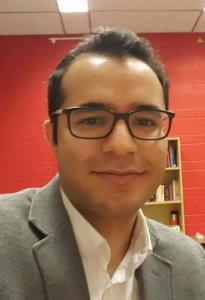
Parking is a cumbersome part of auto travel because drivers have to search for a spot and walk from that spot to their final destination. This conventional method of parking will change with the arrival of autonomous vehicles (AV). In the next decade, users of AVs will be dropped off at their final destination and the occupant-free AVs will search for the nearest and most convenient parking spot. Hence, individuals no longer bear the inconvenience of cruising for parking while sitting in their vehicle. This study quantifies the impact of AVs on parking occupancy and traffic flow. The model considers a mixed group of AVs and conventional vehicles and captures their parking behavior as they try to minimize their generalized travel costs. Insights are obtained from applying the model on several case studies. We show that (i) conventional vehicles park closer to the downtown zone in order to minimize their walking distance whereas AVs park farther away from the downtown zone to minimize their parking search time, (ii) AVs experience a lower search time than conventional vehicles, and (iii) higher AV penetration rates reduce the generalized cost of AVs and conventional vehicles.
Mehdi Nourinejad is a Ph.D. candidate at the Civil Engineering Department of the University of Toronto. He received his B.Sc. degree from Sharif University in 2012 and his M.Sc. degree from the University of Toronto in 2013. Mehdi is a sessional instructor at the University of Toronto where he teaches “Advanced Probability and Statistics”, a course for graduate and undergraduate students. In addition to being a reviewer for several Transportation and Operations Research journals, Mehdi is an editorial member of “Transportation Research Part E: Logistics and Transportation Review”. His research interests are autonomous vehicles, smart cities, mobility-on-demand, sustainable infrastructure management, and freight transportation.
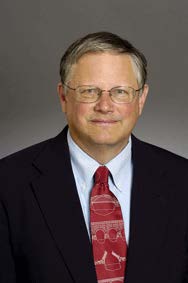
A variety of new technologies for infrastructure management are now reaching implementation stages. These new technologies will profoundly affect the management and performance of transportation and other metropolitan systems. Carnegie Mellon University initiated the inter-disciplinary Traffic21 Institute to deploy new transportation technologies in partnership with corporations and government agencies throughout Pennsylvania. A companion initiative, Metro21, is expanding this effort to include other metropolitan services. In this presentation, a variety of Traffic21 technologies will be presented, focusing on new technologies and implementation issues.
Chris Hendrickson is the Hamerschlag University Professor, Director of the Traffic21 Institute at Carnegie Mellon University, member of the National Academy of Engineering and Editor-in-Chief of the ASCE Journal of Transportation Engineering. His research, teaching and consulting are in the general area of engineering planning and management, including design for the environment, system performance, construction project management, finance and computer applications. He has co-authored seven books and published numerous articles in the professional literature. His education includes BS and MS degrees from Stanford University, a Philosophy degree in economics from Oxford University, and a Ph.D. from the Massachusetts Institute of Technology.

Among a number of approaches for in-vehicle routing, there are two groups that are rather accessible to both academia and practitioners. One is independent routing, which simply disseminates the information of instantaneous traffic conditions of an interested network to equipped vehicles, and expects each driver to independently make his/her own route choice. The second is systemic routing, which collects all drivers’ origin-destination information for a centralized decision unit to systemically make an overall route decision for all involved vehicles. It is well known that independent routing leads to selfish routing and results in oscillating traffic conditions in the network, while systemic routing is for the best interest of the whole network, but not necessarily individual vehicles. Moreover, the computational load in the second approach is too high to be feasible for a real application. To address the dilemma between the above two groups of approaches, this study proposes a novel coordinated online in-vehicle routing mechanism (CRM), assuming that smart vehicles are equipped with wireless communication and local computation facilities.
The proposed CRM models the routing decision process of a group of smart vehicles as a mixed strategy routing game, in which smart vehicles decide their own online route choice priorities by a negotiation and coordination process with other smart vehicles. A discrete choice model is employed to counter for drivers’ behaviors. This study shows the existence of an equilibrium coordinated routing decision for the mixed-strategy routing game. Furthermore, a simultaneously updating distributed algorithm is proposed to implement the CRM. The convergence of the distributed algorithm to the equilibrium routing decision is proved, assuming that individual smart vehicles are selfish players seeking to minimize their own travel times. Numerical experiments conducted based on the Sioux Falls city network indicate that the proposed distributed algorithm converges quickly under different smart vehicle penetration levels; thus it possesses great potential for online applications. Moreover, the proposed coordinated routing mechanism outperforms the traditional independent selfish-routing mechanism; it reduces the travel times for both the overall system and individual vehicles, which represents the core idea of Intelligent Transportation Systems.
Dr. Du is an assistant professor in the Department of Civil, Architectural and Environmental Engineering at the Illinois Institute of Technology (IIT). Before joining IIT, she worked as a Post-doctoral Research Associate for NEXTRANS, the USDOT Region V Regional University Transportation Center at Purdue University, from 2008 to 2012. She received her Ph.D. degree in Decision Sciences and Engineering Systems with a minor in Operations Research and Statistics from Rensselaer Polytechnic Institute in 2008. Dr. Du’s research is characterized by applying operations research, network modeling and statistical methods into transportation system analysis and network modeling. Dr. Du’s current research covers several interdisciplinary research areas in Transportation Engineering, such as Connected and Autonomous Vehicle Systems, Interdependent Infrastructure Network Modeling, Sustainable Multimodal Transportation Systems, Optimization and Data fusion Applications in Traffic Flow Analysis, and so on. Dr. Du’s research articles have appeared in several major transportation journals, including Transportation Research Part B, Transportation Research Part C, IEEE Transactions on ITS, Networks and Spatial Economics, etc . Dr. Du’s research has been funded by the National Science Foundation (including a CAREER award), Illinois Department of Transportation, and the University Transportation Research Center. Her recent project “Driverless City” won the First Nayar Prize at IIT. Dr. Du is currently a member of the Transportation Research Board Committee on Transportation Network Modeling (ADB30) and serves on the editorial board for this committee. She is also on the editorial board of the International Journal of Business Analytics.
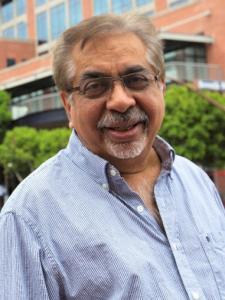
While driving on your favorite route to your destination, have you ever wondered why the technology you are seeing as far as traffic management is concerned is so antiquated? My answer to that is the people and organization that manage the traffic are not “cyber-physicists” nor “real-time optimizers”. MIDAS hopes to demonstrate the synergistic use of a cyber-physical infrastructure consisting of smart-phone type devices; cloud computing, wireless communication, and intelligent transportation systems to manage vehicles in the complex urban network – through the use of traffic controls, route advisories and road pricing/rewards – to jointly optimize drivers’ mobility as well as achieve the sustainability goals of reducing energy usage and improving air quality. A key element of MIDAS-CPS is the real-time streaming data collection and data analysis and the subsequent traffic management through proactive traffic controls and advisories, through visualizations of predicted queues ahead, effective road prices/rewards, and route advisories. Although drivers will not be forced to use recommended routes, it is anticipated that MIDAS-CPS would lead to lesser drive stress and improved road safety, besides the designed benefits on the environment, energy consumption, congestion mitigation, and driver mobility. This talk will only focus on overall architecture of MIDAS and on the proactive traffic management component, while the sponsored multidisciplinary NSF project is at the cutting edge in several areas: real-time image processing, real-time traffic prediction and supply/demand management, and data processing/management through cloud computing.
Dr. Pitu B. Mirchandani [BS/MS degrees in Engineering, UCLA; S.M/ScD. Degrees, Operations Research, MIT] is a Professor of Computing, Informatics, and Decision Systems Engineering at Arizona State University (ASU) where he holds the AVNET Chair for Supply Chain Networks. Pitu Mirchandani has been studying Dynamic Stochastic Networks for close to 40 years, with interests in models and systems for making strategic/tactical/operational decisions in dynamic and stochastic networked environments. Mirchandani’s contributions are in: (1) Location Decision Modeling, (2) Traveler and Vehicle Routing Models, (3) Real-time Data-Driven Decision Systems, and (4) general theoretical contributions to OR modeling, methods and algorithms. Professor Mirchandani has authored/co-authored four books and approximately 200 articles, and he has been a principal investigator on many research programs. Dr. Mirchandani is a lifetime member of IEEE and a Fellow of INFORMS.

Alternative energy vehicles, including Fuel Cell, Battery Electric and Plug In Hybrid technologies, require substantial infrastructure support for rapid dissemination in the market place. This seminar describes the main characteristics of the Hyundai Fuel Cell and PHEV models, and addresses some of the challenges related to the fueling and charging network available for these vehicles.
Mircea Gradu, Ph.D., joined Hyundai Motor America in May 2014 as Director of Engineering and Quality. Gradu leads the development and implementation of product strategy to improve both the initial quality of Hyundai models and vehicle durability. Gradu has more than 23 years of automotive experience, most recently serving as Vice President and Head of Transmission Powertrain and Driveline Engineering for Chrysler Group LLC. Gradu’s distinguished career includes being the recipient of the 2008 Edward Cole Award for Automotive Innovation, the 2005 Forest McFarland Award and the SAE-Timken Howard Simpson Innovation Award from the Society of Automotive Engineers (SAE). Gradu was appointed SAE Fellow in 2011. Gradu was listed among the 50 most influential automotive executives in 2012 by Motor Trend. He has been awarded 56 patents on mechatronic automotive systems, and published over 40 papers. Gradu holds a Doctorate in Mechanical Engineering from the University of Stuttgart, Germany and a Master’s degree in Mechanical Engineering from the Polytechnic Institute of Bucharest. He enjoys classic car driving and restoration, travel and outdoor recreation, including mountain biking, skiing and kiteboarding.
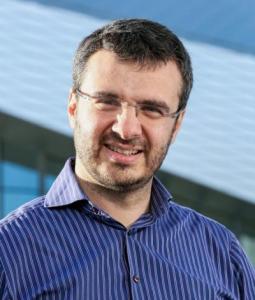
This talk tackles the problem of modeling and optimization in large-scale congested traffic networks in a holistic way with an aggregated realistic representation of traffic dynamics and route choice and multiple modes of transport. We talk about the integration of big multi-sensor data, the understanding of multimodal patterns, the coordination and optimization of urban efficiency for the travel of people. This is challenging because cities are highly complex systems. This seminar will describe methodologies to model and understand the collective behavior for different types of urban systems. It will highlight under what physical properties the aggregated laws will provide reasonable description of congestion for single- and multi-modal systems. It will also describe how to develop hierarchical feedback control and optimization tools and investigate what type of real-time active traffic management schemes (congestion pricing, vehicle restriction, large scale traffic signal control) can improve mobility measures in a city for cities of different structures. The validation of the methodologies and the traffic management schemes are conducted in various and complex city structures scenarios using data from large field experiments and detailed simulations.
Prof. Nikolas Geroliminis is an Associate Professor at EPFL and the head of the Urban Transport Systems Laboratory (LUTS). Before joining EPFL he was an Assistant Professor on the faculty of the Department of Civil Engineering at the University of Minnesota. He has a diploma in Civil Engineering from the National Technical University of Athens (NTUA) and a MSc and Ph.D. in civil engineering from University of California, Berkeley. He is an Associate Editor for Transportation Research part C and he also serves in the editorial board of TR, part B, part C, Journal of ITS and of many international conferences. He is a member of the Transportation Research Board’s Traffic Flow Theory Committee. His research interests focus primarily on urban transportation systems, traffic flow theory and traffic control, public transportation and logistics, Optimization and Large Scale Networks. He is a recent recipient of the ERC Starting Grant “METAFERW: Modeling and controlling traffic congestion and propagation in large-scale urban multimodal networks”

This will be an overview of current development in urban transportation management technologies. I will describe some
of the work begin done in predictive real-time operation, describe the goals of connected vehicle, examine some of
connected vehicle’s impact of transportation operation, clearing the air between automated and autonomous vehicles, and
discuss some possible impact of automation on transportation management. If I have time, I’ll also touch on some of the
new challenges advanced transportation management systems are facing and could encounter in the future. The goal of
this talk is to stimulate discussion and ideas where additional research will help.
Edward Fok is a Transportation Technology Specialist with the Federal Highway Administration (FHWA) Office of Technical
Service/Resource Center. He helps public agencies apply advanced transportation systems and processes to solve mobility problems.
He also helps researchers at Turner-Fairbanks and the Joint Program Office advance the state of the art in transportation operations.
Ed is very active in many technical areas including Integrate Corridor Management, Connected Vehicles, Cyber Security, Automated
Vehicles, and Advanced Freight Systems. Ed came to FHWA from the City of Los Angeles with 11 years of operations and research
experiences and holds multiple professional engineering licenses.
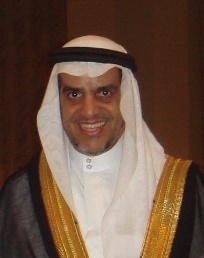
The annual pilgrimage to Mecca (Hajj) induces the gathering of millions of worshipers at the same time in the Holy shrines in and around Mecca. Tawaf, or circumambulation of the Kaa’ba, the focal point of the Grand Mosque (Haram), is the cornerstone of Hajj rituals. Another critical ritual experiencing overcrowding is the Jamarat system, which was a notorious crowd bottleneck, composed of three stone monuments, each surrounded by a ring, where pilgrims are supposed to throw pebbles in a given sequence.
The situation at the Jamarat site was highly dangerous due to the vast number of Hajjis trying to stone the pillars in a relatively short period of time and limited space. Many sad fatal accidents have occurred over the years and the area was in urgent need of development. Authorities proposed a design that offered a significant improvement to the safety of the pilgrims, replacing the one tier structure with a 4 tier structure (5 levels) and we were called for to audit such design. In order to ensure that the new Jamarat structure satisfies the required criteria of pilgrim safety during periods of overcrowding, its conceptual design was subjected to crowd modeling and simulation to test, evaluate and, when needed, modify its different design elements. The goal was to determine the capacity, throughput and performance of the proposed design.
On the other hand, the new expansion of Mecca’s Grand Mosque is supposed to increase its capacity to about threefold, and this is expected to significantly add more load on the Tawaf ritual. We assessed the Tawaf performance, and modeled a range of its site’s (court yard) configurations. This effort helped reach a final design that is currently under construction.
Modelling and simulation of crowds is a relatively new field, with early simulation models emerging in late 1980’s and the field dramatically expanded starting in late 1990’s. It can be a very useful tool in designing safe places for mass gatherings.
Professor AlGadhi’s research interests include modelling and simulation of crowd behavior and movement, transportation systems analysis, transit planning, traffic safety, and traffic flow theory; with special interest in Hajj (Pilgrimage to Mecca) crowd and transportation studies. Dr. AlGadhi, holds a Ph.D. in Civil Engineering (Transportation) from the University of Texas at Austin (1990), M.Sc. from the University of Illinois (Urbana), and a B.Sc. from King Saud University (Riyadh, Saudi Arabia). He is a professor of civil engineering at King Saud University..

The Hajj – the great Islamic pilgrimage to Makkah, Saudi Arabia – is known to be the largest annually occurring pedestrian problem in the world with more than 3 million pilgrims each year. Pilgrims perform several religious rituals, including Ramy al-Jamarat – the stoning of the devil ritual – which is known to be particularly crowded. Until 2006, several sad crowd disasters with hundreds of casualties occurred. In the aftermath of the Hajj in 2006, several measures have been taken to improve safety and to avoid crowd disasters. One particular measure is the development of a time schedule for the pilgrims to perform the stoning ritual. In this paper, we present a model and a solution approach to the Pilgrim Scheduling Problem. The model minimizes the deviation of the scheduled stoning time from the preferred stoning time, while taking into account resource capacities (street width, for example) to avoid critical densities of pilgrims. At the same time pilgrims are assigned to routes leading to the ritual site. We solve the Pilgrim Scheduling Problem by an intelligible fix-and-optimize heuristic. Our approach has been an integral part of the planning of Hajj since 2006/2007 and no further crowd disaster has happened in the periods 2007-2014. We illustrate our work with computational results and validation data for the Hajj in 2014-
This contribution has been selected as a 2015 INFORMS Franz Edelman Award finalist (https://www.informs.org/About-INFORMS/News-Room/Press-Releases/2015-Edelman-Finalists)
* Dirk Helbing was only involved in the consultancy for the first successful implementation in 2007.
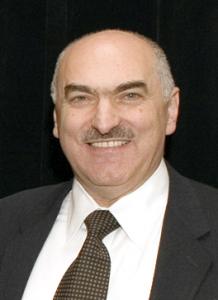
We present a general conceptual framework to explore autonomous vehicle adoption. The traffic flow implications of different adoption rates are examined using a microscopic modeling framework of mixed traffic streams in which certain fractions of the vehicles are respectively autonomous, connected or both. We jointly model the properties of the peer-to-peer communication systems for different levels of message content. The framework is used in an exploratory analysis of the flow characteristics of the resulting mixed traffic stream, with particular attention to throughput and stability.
Professor Hani S. Mahmassani is the William A. Patterson Distinguished Chair in Transportation; Director, Northwestern University Transportation Center; Professor, Civil and Environmental Engineering, McCormick School of Engineering and Applied Science; and Professor (courtesy), Managerial Economics and Decision Sciences, Kellogg School of Management. Professor Mahmassani specializes in multimodal transportation systems analysis, planning and operations, dynamic network modeling and optimization, transit network planning and design, dynamics of user behavior and telematics, telecommunication-transportation interactions, large-scale human infrastructure systems, and real-time operation of logistics and distribution systems.









